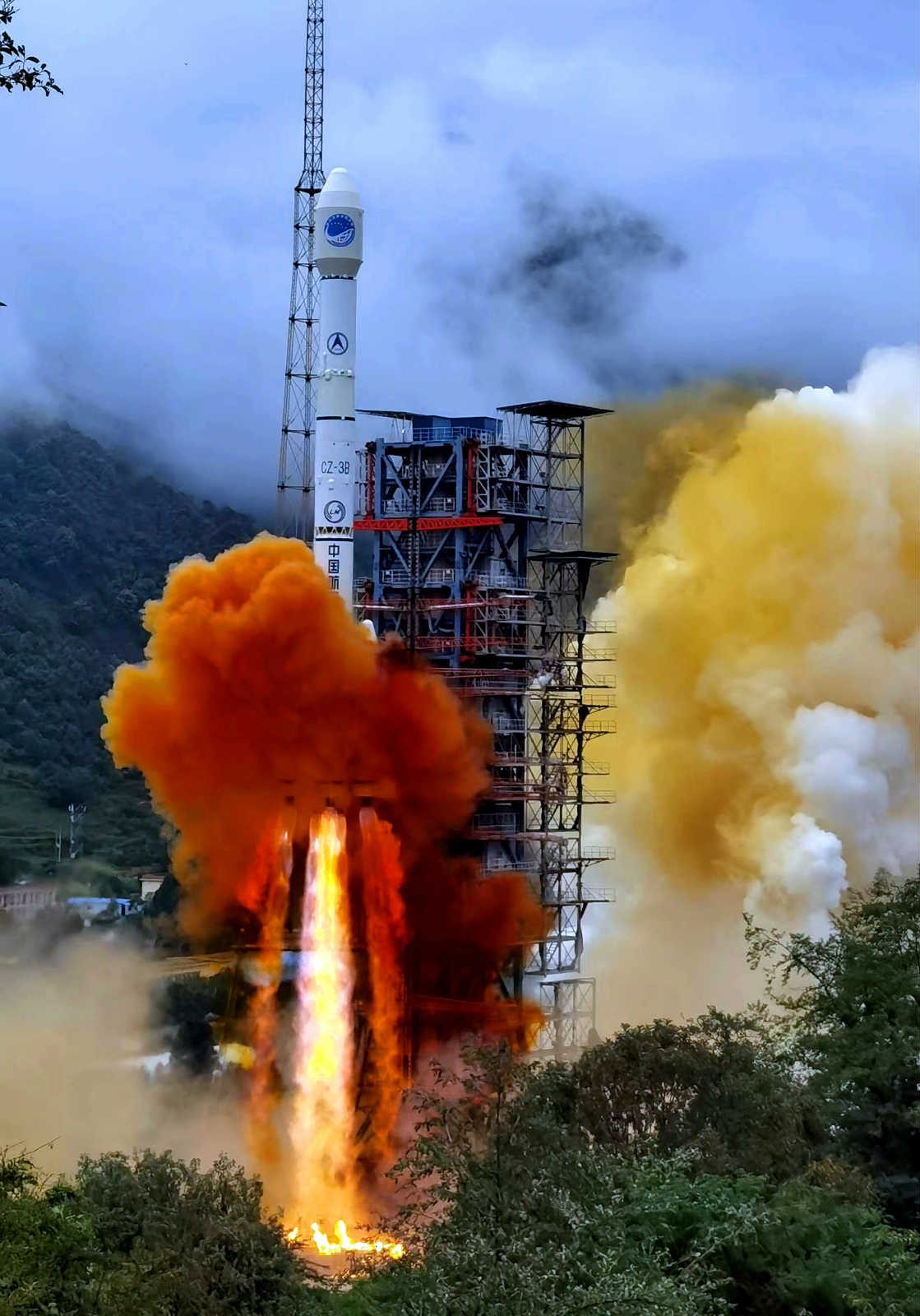

China's BeiDou Navigation Satellite System (BDS) has played a significant role in the country's flood-control operations, according to the BDS Spokesperson in a recent press conference. In addition to that, there are 10 things you must know about the BDS system.

A carrier rocket carrying the last satellite of the BeiDou Navigation Satellite System blasts off from the Xichang Satellite Launch Center in Southwest China's Sichuan Province, June 23. (Photo by Li Jieyi/People's Daily Online)
1. The construction of BDS-3 system started in 2009, and a global navigation system was completed six months ahead of schedule. More than 400 units and over 300,000 scientific and technological personnel have gathered their collective wisdom to tackle key problems, so that essential components of the system can be 100 percent domestic.
2. The number of Beidou satellites has increased greatly in 2020. Beidou satellite signals can be received and navigation services can be provided almost everywhere in the world.
3. On the basis of the relevant documents issued earlier, the BDS has released interface control documents for five types of services, including Precise Point Positioning and Ground-based Augmentation. The interface control documents of two types of services will be published in a targeted way, meaning that the interface control documents issued by the BDS have covered all seven types of services.
4. The global positioning accuracy of the BDS is better than 10 meters; the velocity measurement accuracy is better than 0.2 m/s; the timing accuracy is better than 20 nanoseconds. According to the results of the recent week of the global continuous monitoring and evaluation system, the average global positioning accuracy of the BDS is 2.34 meters, which is better than the previously announced accuracy.
5. The BDS has played a vital role in fighting against the pandemic this year. For example, the BDS provides high-precision benchmark services for disaster relief vehicles.
6. Products linked to the BDS have been exported to over 120 countries and regions.
7. The BDS is one of the four major global satellite navigation systems recognized by the United Nations. The BDS’s compatibility and interoperability with the satellite navigation systems of the U.S., Russia and the European Union and the cooperation among systems have been continuously deepened.
8. The 28-nm-category chips used in the BDS are in mass production. Most smart phones support the BDS, and cell phones that support high-precision applications are already on the market.
9. The integration of satellite navigation and emerging technologies will be further promoted, such as 5G, mobile communications, big data, the Internet, which will certainly bring more new models, new business types and new economic growth points.
10. After the completion of BDS-3, China has embarked on the construction and development of the next generation of the BDS. It is necessary to build a smarter, more ubiquitous and more integrated system by 2035. To put it simply, there will be a stronger, safer and more reliable system with three-dimensional services from indoor to outdoor, deep sea and deep space.
 Fire brigade in Shanghai holds group wedding
Fire brigade in Shanghai holds group wedding Tourists enjoy ice sculptures in Datan Town, north China
Tourists enjoy ice sculptures in Datan Town, north China Sunset scenery of Dayan Pagoda in Xi'an
Sunset scenery of Dayan Pagoda in Xi'an Tourists have fun at scenic spot in Nanlong Town, NW China
Tourists have fun at scenic spot in Nanlong Town, NW China Harbin attracts tourists by making best use of ice in winter
Harbin attracts tourists by making best use of ice in winter In pics: FIS Alpine Ski Women's World Cup Slalom
In pics: FIS Alpine Ski Women's World Cup Slalom Black-necked cranes rest at reservoir in Lhunzhub County, Lhasa
Black-necked cranes rest at reservoir in Lhunzhub County, Lhasa China's FAST telescope will be available to foreign scientists in April
China's FAST telescope will be available to foreign scientists in April "She power" plays indispensable role in poverty alleviation
"She power" plays indispensable role in poverty alleviation Top 10 world news events of People's Daily in 2020
Top 10 world news events of People's Daily in 2020 Top 10 China news events of People's Daily in 2020
Top 10 China news events of People's Daily in 2020 Top 10 media buzzwords of 2020
Top 10 media buzzwords of 2020 Year-ender:10 major tourism stories of 2020
Year-ender:10 major tourism stories of 2020 No interference in Venezuelan issues
No interference in Venezuelan issues
 Biz prepares for trade spat
Biz prepares for trade spat
 Broadcasting Continent
Broadcasting Continent Australia wins Chinese CEOs as US loses
Australia wins Chinese CEOs as US loses